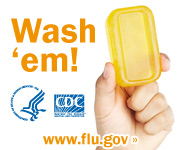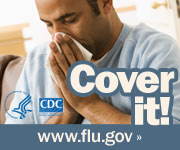It has been broadly noted that of the 36 child deaths from H1N1 67% (this is about 9% higher than the yearly seasonal flu) had a high risk medical condition and 92% of those with a high risk medical condition were children with neurodevelopmental conditions.Of the 02% who had a neurodevelopmental condition 59% had multiple neurodevelopmental disabilities and 41% had chronic pulmonary problems. Many of these children also had a hospital accquired infection like MRSA when they died. (From The Surveillance of Pediatric Deaths Associated with the 2009 H1N1 Epidemic by the CDC.)
What this means is that our students with severe and multiple disabilities are at very high risk should they become infected with the H1N1 flu, or really any influenza infection. Already some strains of the virus are resistant to anti-viral medication, so prevention is our number on weapon. We as teachers, working with our supervisors and program or classroom nurses are at the forefront of ensuring that our students do not become infected with any strain of flu virus, including H1N1 at school.
Prevention Guidelines (from the CDC)
- If you are ill, stay home until fever is gone without medication for 24 hours
- If students are sick they should be required to stay home until temperature is normal for 24 hours without medication
- Frequently wash your hands with soap and water and assist students with hand washing following hand washing guidelines (warm water, use soap, rub for twenty seconds, etc.)
- If soap and water is not available use an alcohol based sanitizer frequently (rub until dry)
- Wash/sanitize all the areas of your hands palms, backs, between fingers, fingertips, thumb & wrist, nails
- Avoid touching eyes, nose and mouth and wash hands after touching face
- When coughing or sneezing over mouth/nose with a tissue and dispose of immediately in waste basket, then wash hands
- H1N1 can survive 2-8 hours on surfaces, decontamination can be done using heat 167-212°F, chlorine (bleach), hydrogen peroxide, detergents (soap), iodophors (iodine-based antiseptics), and alcohol (such as alcohol based cleaners/sanitizers)
- Surfaces like phones, keyboards, and doorknobs (not to mention switches) should be cleaned with alcohol wipes or anti-flu cleaning wipe often
- Clothes and linens can be washed with other items using regular laundry detergent and tumbled dry on high heat, care should be taken not to "hug" the dirty laundry to you before washing and wash hands after handling dirty laundry
- Eating utensils should be washed in a dish washer or by hand using soap and water
- For the record you cannot catch H1N1 from eating pork or pork products
H1N1 Symptoms (from the CDC)
- fever
- cough
- sore throat
- runny or stuffy nose
- body aches
- headache
- chills
- fatigue
- some people may have vomiting and diarrhea
Other Flu Links
- CDC on H1N1
- weekly flu tracking from the CDC
- swine flu plush toy
- talking to kids about H1N1
- how to wash and sanitize your hands poster
- Handwashing Sign Kit for Schools
- Handwashing Curriculum
- Soapacabana
- H1N1 ABC Song











These are all great tips. It is so important to teach our children these safety tips. I think Elmo will be a huge help in accomplishing this.
ReplyDelete